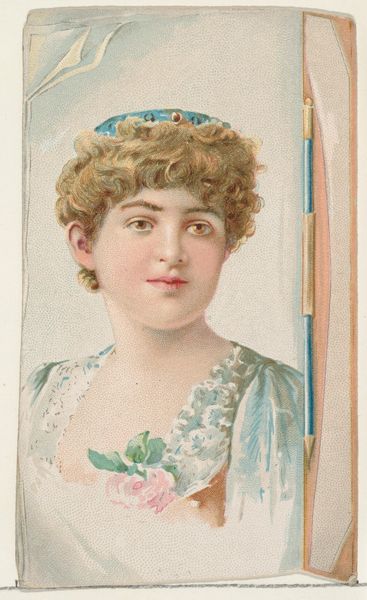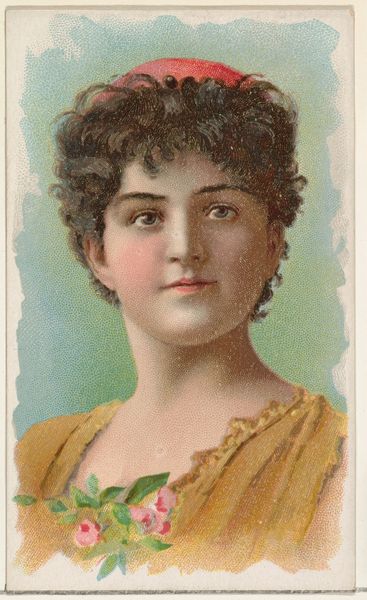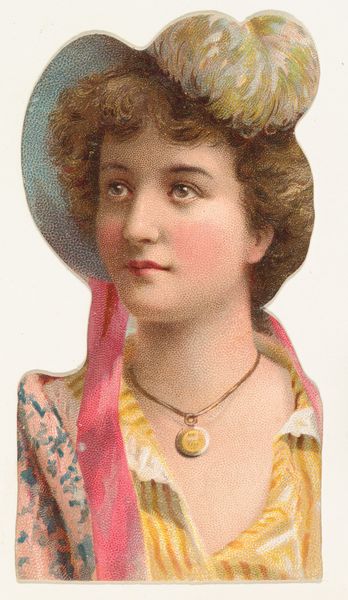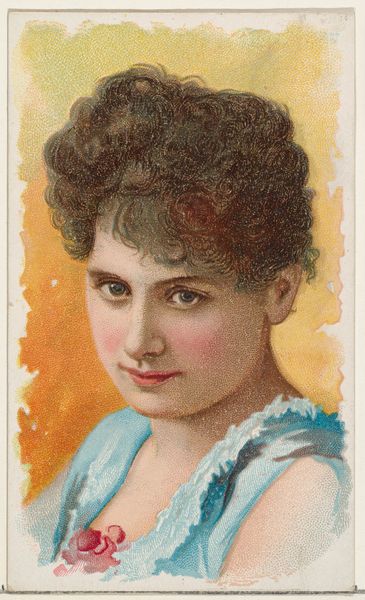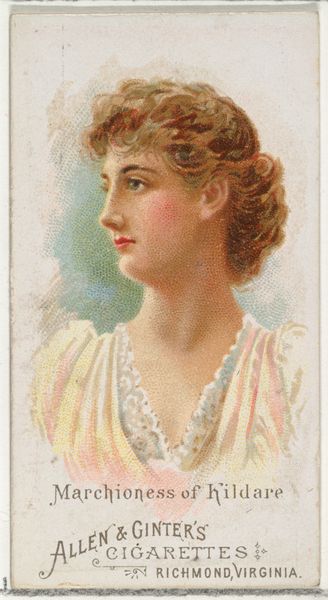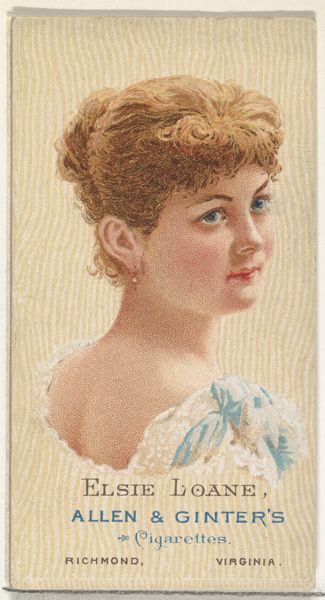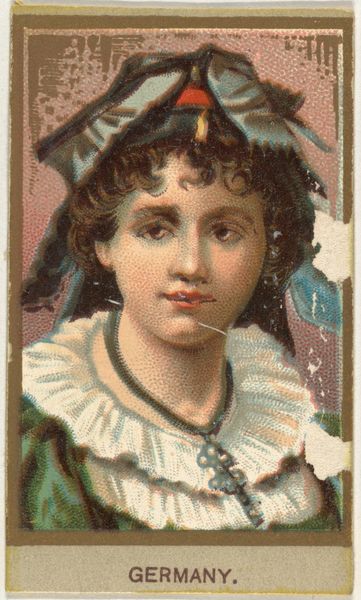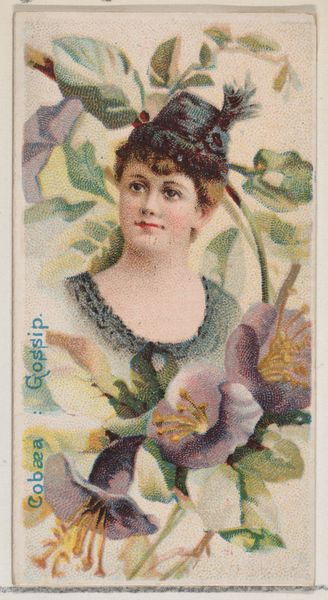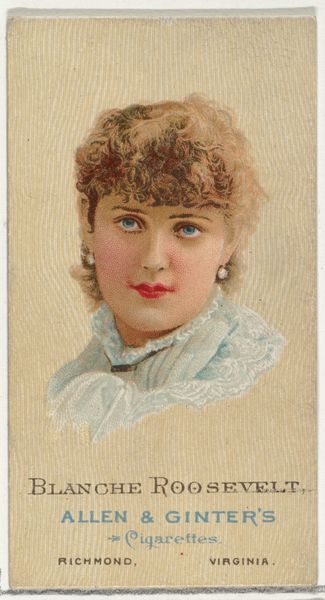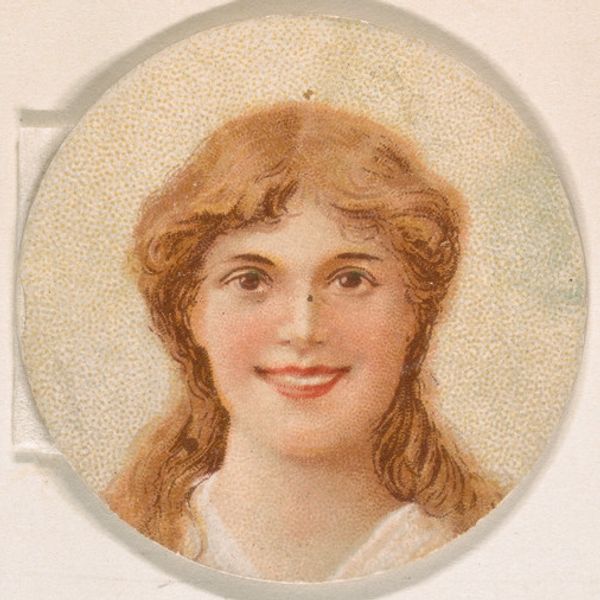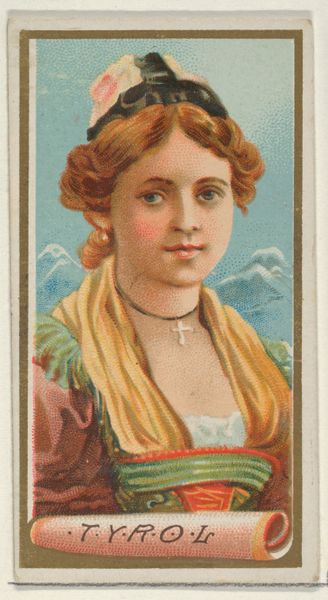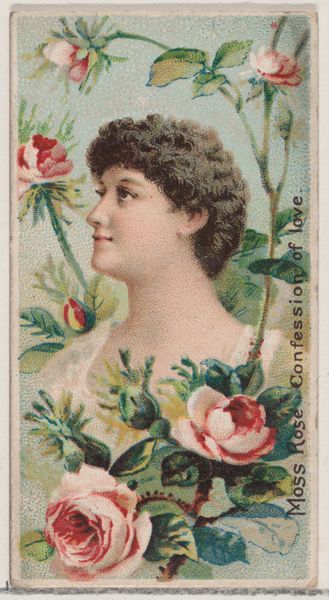
History of Mary Anderson, from the Histories of Poor Boys and Famous People series of booklets (N79) for Duke brand cigarettes 1888
0:00
0:00
drawing, coloured-pencil, print
#
portrait
#
drawing
#
coloured-pencil
# print
#
impressionism
#
coloured pencil
Dimensions: Overall (Booklet closed): 2 3/4 × 1 1/2 in. (7 × 3.8 cm) Overall (Booklet open): 2 3/4 × 2 7/8 in. (7 × 7.3 cm)
Copyright: Public Domain
Curator: This is "History of Mary Anderson, from the Histories of Poor Boys and Famous People series of booklets (N79) for Duke brand cigarettes," dating back to 1888. We're fortunate to have it here at The Met. It's a colored-pencil print, one of a series commissioned by W. Duke, Sons & Co. Editor: Well, she looks remarkably serene for someone whose image ended up hawking cigarettes. There's something almost dreamlike about it, with those soft colors and gentle lines. It reminds me a bit of a Victorian-era cameo. Curator: Precisely! It’s fascinating to consider how mass production and celebrity endorsement intertwined even then. These booklets were essentially advertising premiums, inserted into cigarette packs. Think of it as a precursor to trading cards. Editor: So, the purchase of an unhealthy product becomes entangled with aspirations of social mobility and fame. There's an odd parallel between Mary Anderson’s history and the ephemeral pleasure promised by these cigarettes. Smoke and mirrors, wouldn’t you say? Curator: Absolutely. The materiality is key. It is cheaply printed but painstakingly rendered in coloured pencil - elevating everyday ephemera to something more 'precious'. The artist has taken immense care replicating textures—the lace, the hair—suggesting a skill-intensive production. Yet this runs against its mass consumption objective, where it's readily discardable. Editor: Yes, there is a hauntingly familiar aspect. That fleeting moment of beauty, quickly consumed. It’s a portrait of fleeting fame encased within a pack meant to disappear. Mary herself must have thought, "well that's me, alright", and laughed quietly to herself about it. It could also just be wistfulness but that might be too deep for a cigarette pamphlet. Curator: And the demographic? Likely young working-class men, given their association with factory jobs at the time. This brings a subtle contradiction when you look closer. Consumption creates its culture; these cheap portraits fed consumer desire while presenting stories for bettering oneself via consumerist drive. Editor: The tension between art, commerce, aspiration. I never thought I'd find all this complexity hidden within something meant to be tossed aside after enjoying your cigarette! Curator: Exactly. These small artifacts provide unique lens for examining 19th-century notions surrounding work, fame, and commercial aspirations. Editor: Indeed. Makes you reconsider your own little habits as well doesn't it?
Comments
No comments
Be the first to comment and join the conversation on the ultimate creative platform.
